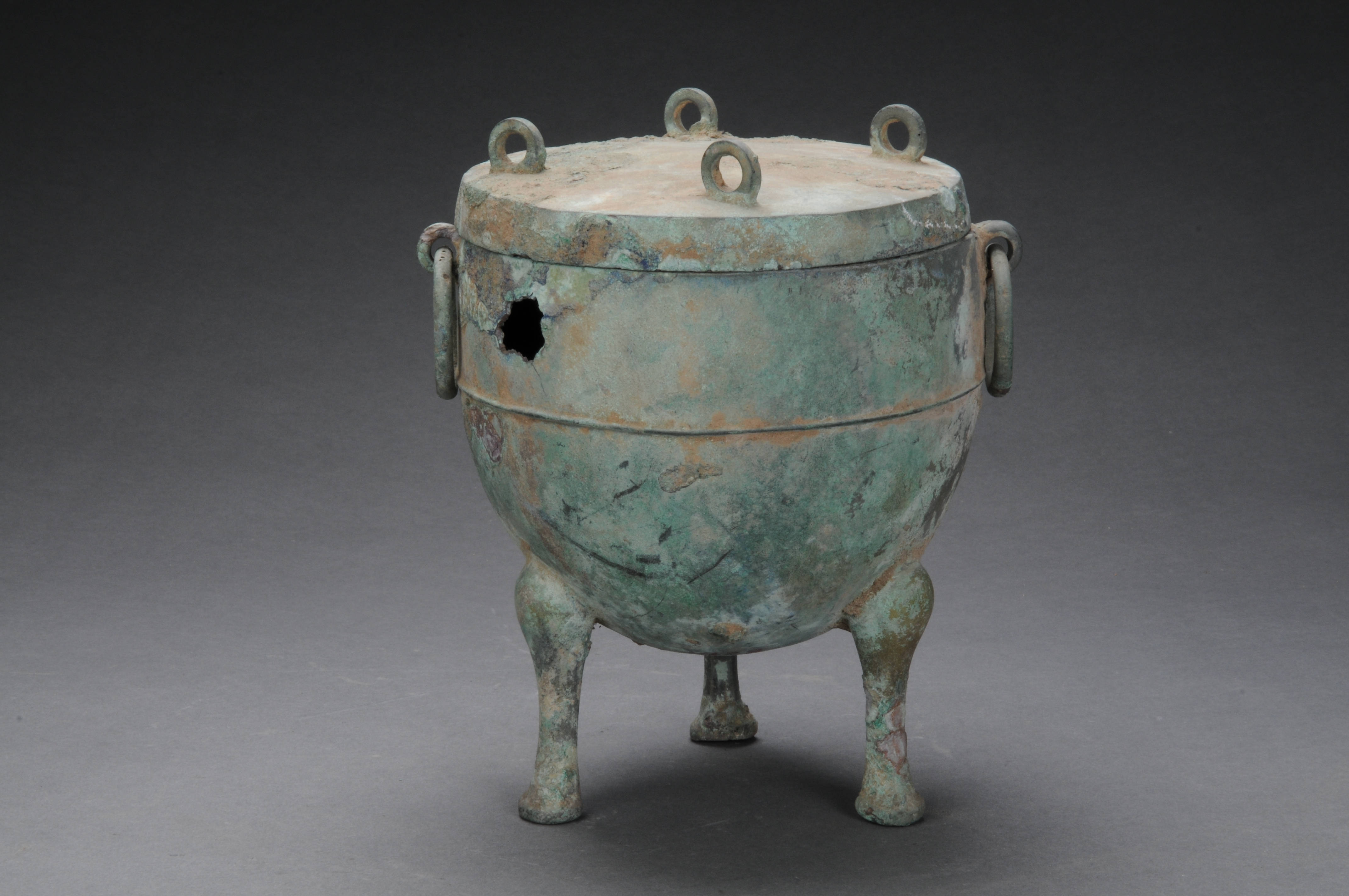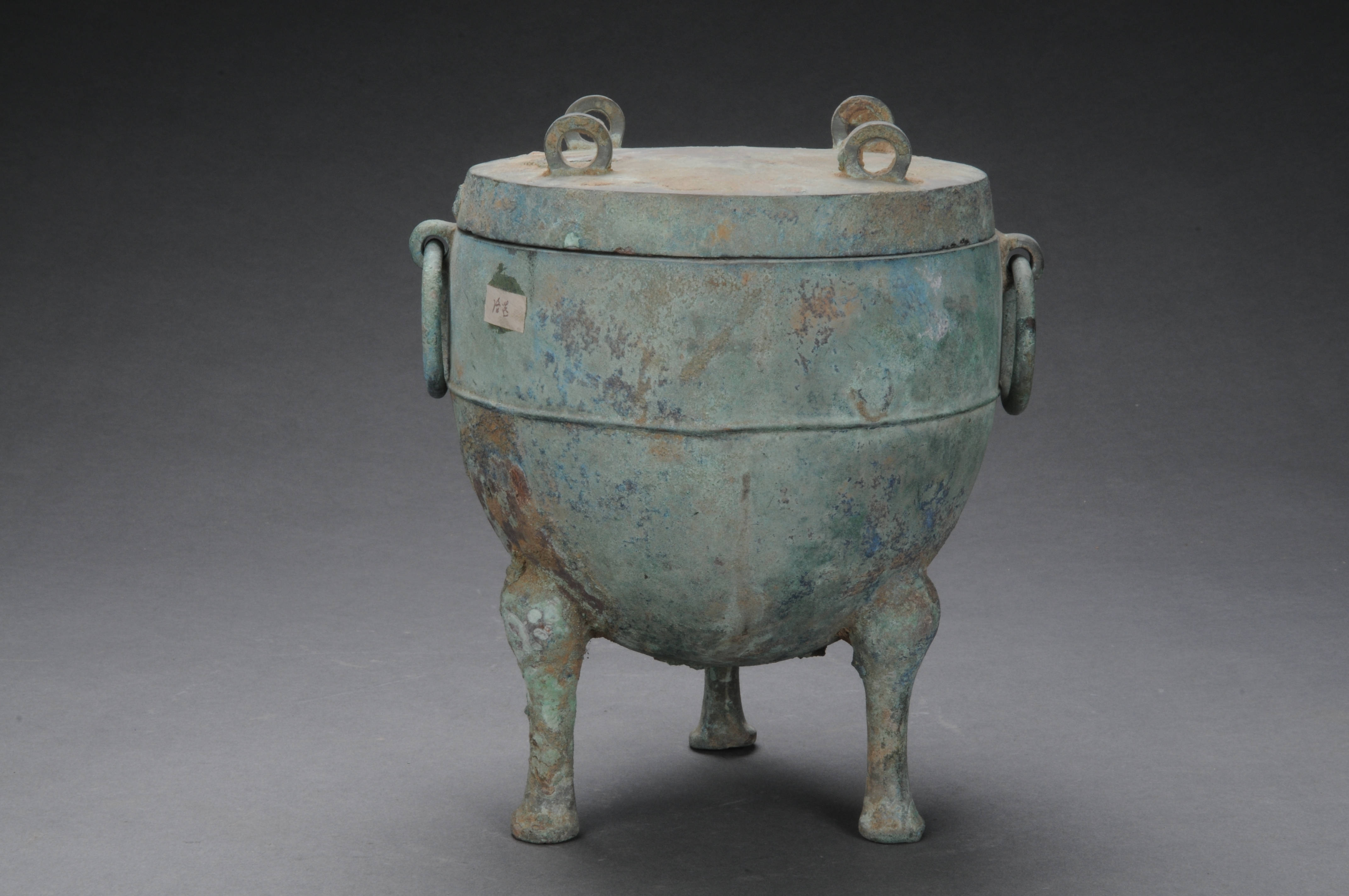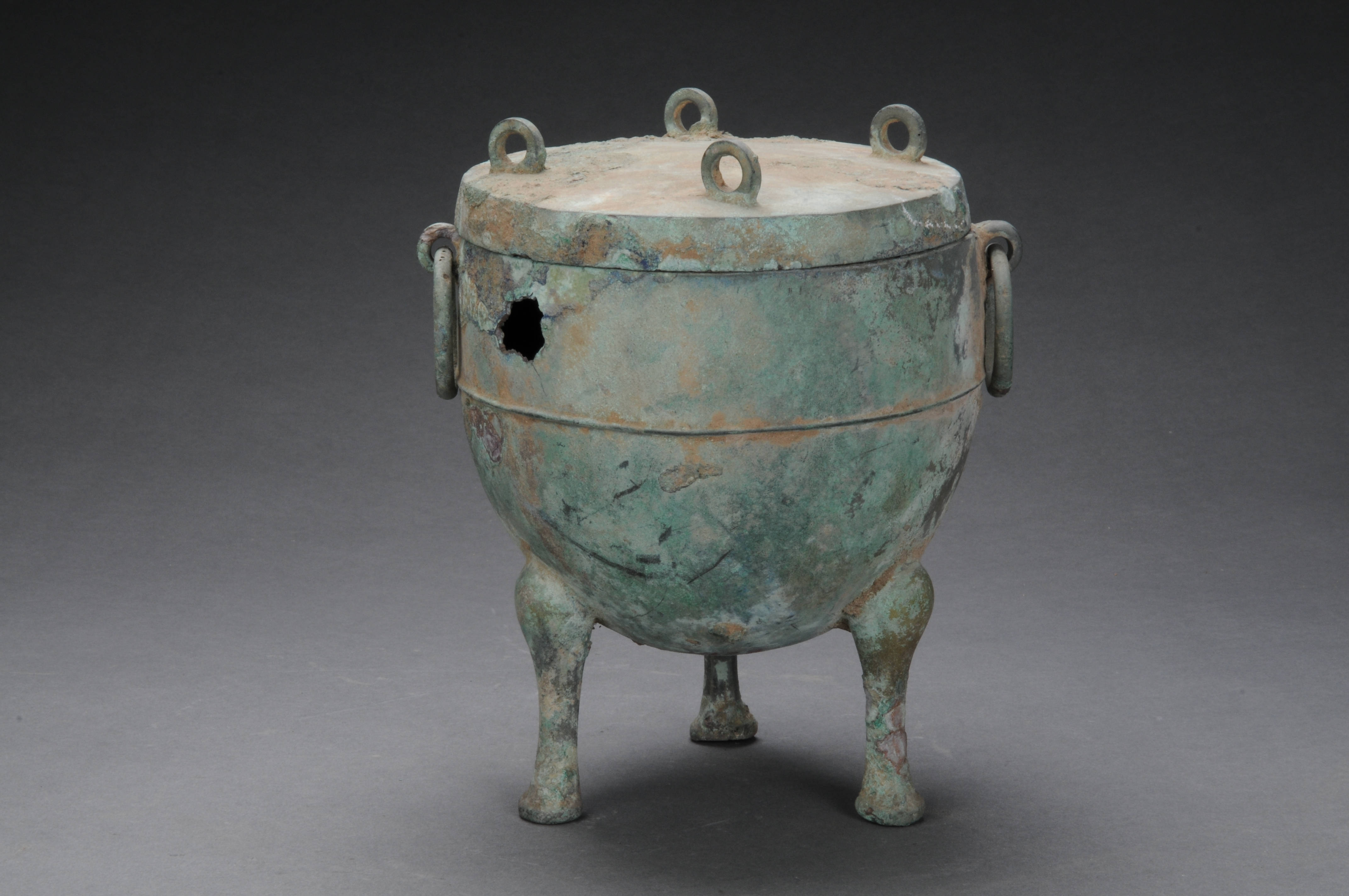

Date: Warring States Period (475-221 BC)
Provenance: Acquired through public solicitation
Measurements: Height: 25.5cm for each
These two bronze ding cauldrons served as vessels for cooking and presenting food offerings. These ceremonial utensils were employed by ancient royalty and nobility during rituals, including sacrifices, funerals, military expeditions, and festive occasions like weddings. As essential ceremonial objects, bronze vessels of diverse sizes were employed to prepare and serve food, representing the social status and rank of the host.
During the Spring and Autumn and Warring States periods (770-221 BC), there were significant advancements in bronze casting techniques. According to the Rites of Zhou (Zhou Li), it is recorded that ancient Chinese people already obtained certain understandings of the properties of metals such as copper, tin, lead, and zinc. During this period, techniques like piece-mold casting, integral casting, mold casting, mortise and tenon joints, and inlaying emerged successively, presenting a splendid late period of the Bronze Age.

